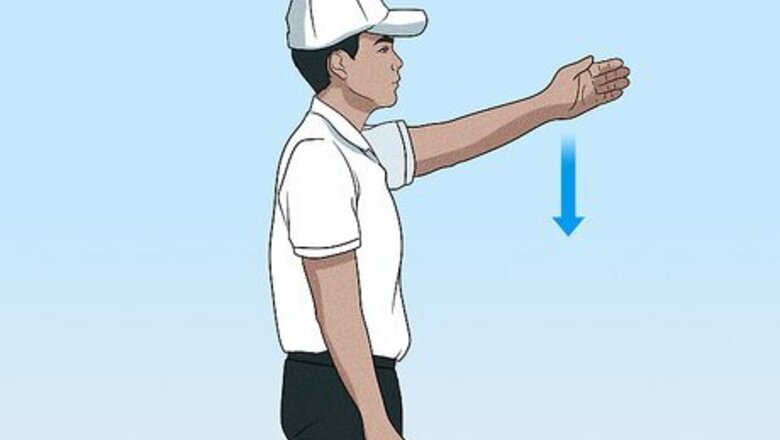
views
Gameplay
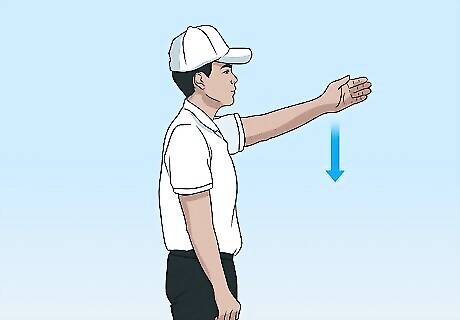
Ready for play The referee raises a single arm in the air and swings it down in a calm, steady manner. The ref blows the whistle at the same time. What it means: One of the referee’s main jobs is to control the clock and flow of the game. “Ready to play” is often followed by “start the clock” (unless it was stopped previously). Once “ready for play” is signaled, the ball is able to be snapped.
Start the clock The ref uses one hand to make a large circular motion. The ref blows a whistle at the same time. What it means: The clock starts.
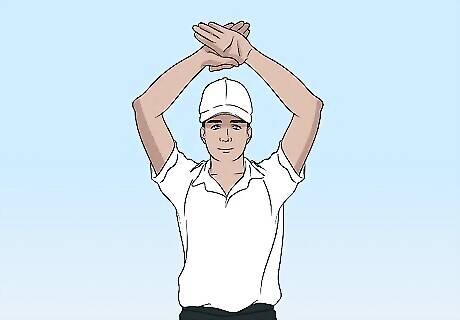
Time stops The referee raises their arms above their head and crosses their hands and arms back and forth like they’re trying to wave someone down. It’s accompanied by a whistle-blow. What it means: The clock stops.
Timeout, or two minute warning The ref makes a big “T” symbol with their arms. It is followed by a whistle and a time stops. What it means: A coach or player has called timeout. This is also the symbol for the two minute warning. What is the two minute warning? In the NFL, it’s an automatic clock stoppage that occurs at 2:00 in the 4th quarter. It’s sort of like a free timeout for both teams.
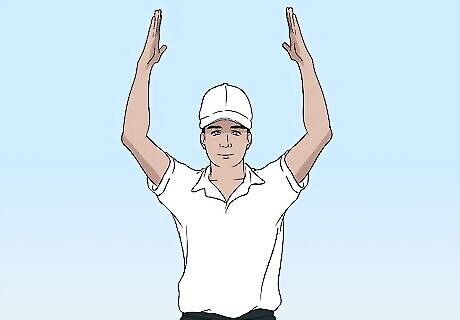
Touchdown, field goal, and point after touchdown The ref raises both arms straight up in the air and holds their arms still. This is the same motion for touchdowns, field goals, and points made after a touchdown (either a one-point kick or a two-point conversion). What it means: Someone scored!
Safety The ref raises both arms above their head like a touchdown signal and then puts their palms together like they’re praying. What it means: Someone scored a safety. What’s a safety? A safety occurs when a team is tackled or goes out of bounds with the ball in their own endzone. It’s a rare occurrence in most football games, but it’s a big deal when it happens because the team that scored gets the ball back immediately.
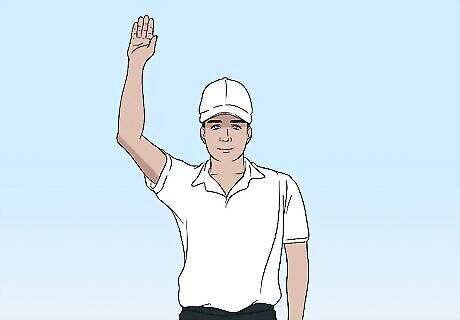
Dead ball, touchback The referee raises one arm straight in the air and then waves it back and forth like they’re trying to wave someone down. What it means: The ball is not live. Refs will use this signal if there’s any confusion on the field about whether the ball is live or not. What is a touchback? A touchback occurs when the kicking team kicks the ball into (or out of) the opposing team’s endzone. The ball automatically gets spotted at the 35, 30, 25, or 20-yard line, depending on the league’s rules. In the NFL, touchbacks put the ball on the 35.
First down The ref looks in the direction that the offense is going and points at the endzone. Refs will often use a little flair and momentum with this signal. What it means: A team has achieved a first down. What is a first down? In football, the offense has four opportunities (called “downs”) to move the ball at least 10 yards. If they do that, the downs “reset” and you get a fresh set. So, a “first down” call indicates that the team successfully made 10 yards of progress.
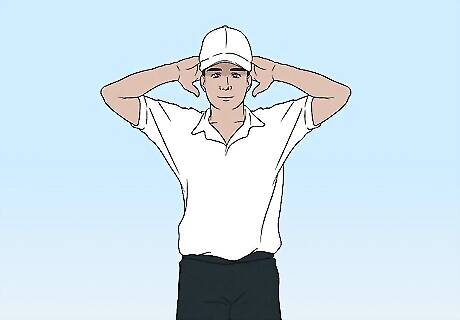
Loss of down The referee puts both hands behind their head with their fingers interlocked.. What it means: The team with the ball has lost a down.
Incomplete pass, penalty declined, or no score The ref waves both arms in front of them back and forth as if they’re saying “no.” What it means: Either a pass wasn’t completed, a penalty was declined by the team that had the option to enforce it, or a team missed a field goal or point after touchdown.
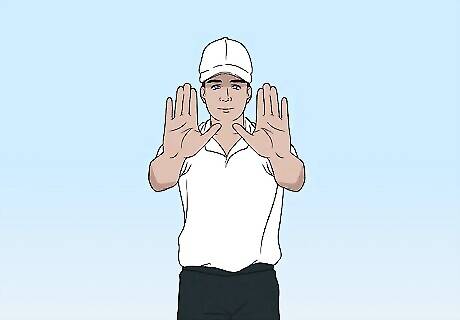
Ball caught out of bounds The referee raises both arms and makes a sliding motion out of bounds with their hands. What it means: The catch is not legal because the receiver didn’t land in bounds. Refs will use this signal instead of the incomplete pass sign just to let everyone know that the receiver actually did catch the ball, although it’s functionally the same thing as an incomplete pass.
Ball was tipped (legally) The ref raises their hands in the air and rubs one hand against the other repeatedly. What it means: This is really more of an information thing than a gameplay management call. The ref will do this just to clear up why a ball moved the way it did when it was thrown or kicked. They’re letting everyone know someone tipped the ball but that the ball was still live.
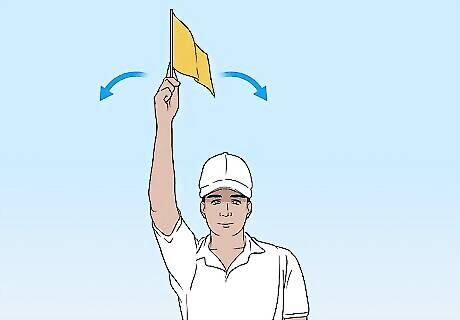
Disregard flag The ref raises the flag in the air and waves it back and forth, kind of like they’re trying to hail a cab. What it means: The flag that was thrown on the field was either an accident, or the refs talked it over and decided whatever they thought the penalty was actually didn’t qualify as a penalty. It’s just the ref’s way of going “our bad, no penalty.”
Inadvertent whistle The ref makes a fist near their armpit then extends it straight in front of them. What it means: The last whistle that was blown didn’t actually mean anything. This is another one of those “whoops, our bad” signals.
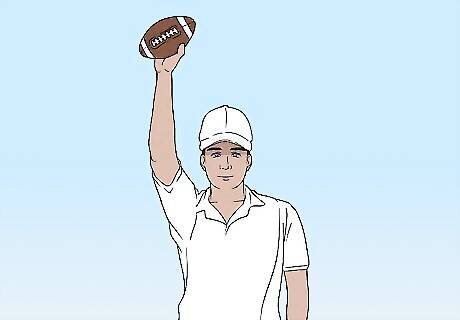
End of period The ref raises the football directly above their head and holds it there. Then, they blow a long whistle. What it means: The quarter is over.
Sideline warning The referee holds both arms out to their side, parallel to the ground. Then, they slowly move their arms towards the sideline like they’re trying to say “back up.” What it means: This is a pretty rare signal. Refs use it to basically warn a team that they need to back up or stop interfering with play.
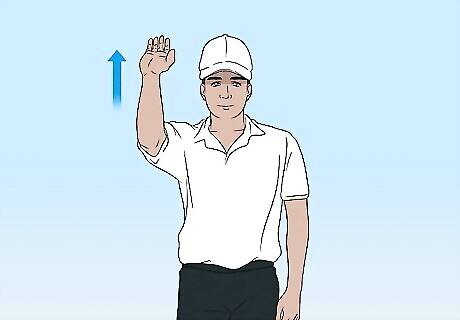
Reset play clock to 25 seconds The referee raises one hand in the air and makes a kind of pumping motion like their head is a soap dispenser. What it means: The play clock needs to be reset to 25 seconds. This can occur for a number of reasons, but it’s typically because the refs stopped a set play, a team called timeout, there’s a two-minute warning, or a penalty needs to be enforced.
Reset play clock to 40 seconds The motion is identical to the 25-second reset signal, but the referee uses both hands instead of just one. What it means: The play clock needs to be reset to 40 seconds. That’s the normal “full” shot clock amount. Refs will often award this one if the referees make a mistake or they need to meet to discuss a potential penalty.
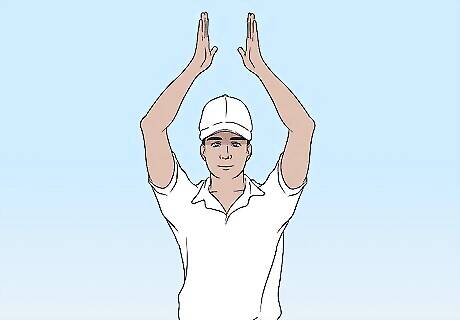
Close to 1st down, but not a first down The referee holds both hands up in the air over their head and puts their palms straight up, leaving a gap between their hands. What it means: The refs are signaling that the ball is close to being over the first down line, but it isn’t quite there.
Fourth down The ref raises a single fist in the air and blows a whistle. What it means: The refs are letting the offensive team know that it’s fourth down. That’s a big deal because it’s either the offense’s last chance to get a first down, or it’s time to punt.
Penalties
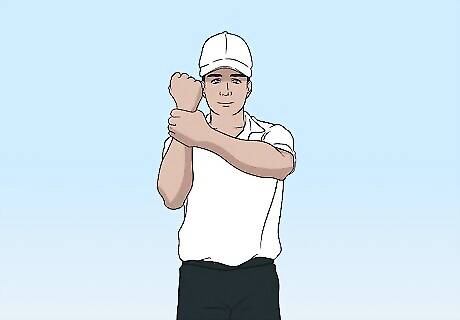
Holding The ref makes a fist with their right hand, holds it up to their chest, and then grabs their forearm just below the fist. What it means: A player illegally held another player. Penalty consequence: 10 yards (offensive holding), or 5 yards and an automatic first down (defensive holding).
False start This is the same motion that refs use in the NBA for travelling. The referee spins their forearms around one another in a looping motion. This is also the penalty motion for illegal procedure on offense. What it means: An offensive player “jumped” like the play was starting, but the play didn’t start. For illegal procedure, it means a player moved in an illegal way before the play started. Penalty consequence: 5 yards.
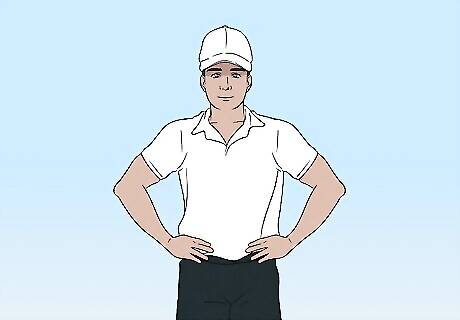
Encroachment The ref puts their hands on their hips like they’re really disappointed in you. What it means: A defensive player crossed the line of scrimmage and made contact with an opponent before the ball was snapped. (If the player doesn’t make contact but causes an offensive player to move, it is called as a neutral zone infraction) Penalty consequence: 5 yards.
Illegal shift or illegal motion The ref holds one arm up to shoulder-height, parallel with the ground. Then, they bend at the elbow and move their forearm to their chest. What it means: A player moved in an illegal way prior to the snap of the ball. This typically gets called on offensive players who are not “set” in a legal position when the play starts. Penalty consequence: 5 yards.
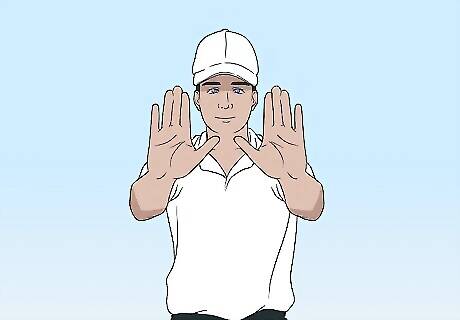
Pass interference The ref holds both arms out with their palms up, as if they’re going “halt, come no further.” What it means: A player interfered with another player’s ability to play the ball, typically by grabbing, holding, or pushing another player. Penalty consequence: This is called a “spot” penalty if the defense commits it, which means the ball goes wherever the foul was committed. It is an automatic first down. If the offense commits pass interference, the penalty is 10 yards and a loss of downs.
Delay of game The ref folds their arms on top of one another and holds their forearms up to their chest. What it means: The play clock ran out. Penalty consequence: 5 yards.
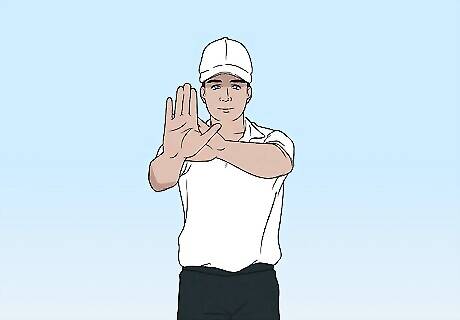
Illegal use of hands The referee grabs their own wrist and then makes a pushing motion. What it means: A player hit or grabbed another player’s neck, head, or face. Penalty consequence: 10 yards.
Illegal substitution With both arms at the ref’s side, they raise one arm and touch the opposite shoulder. Then, they point at the offending team. What it means: A player entered or exited the field illegally. This penalty also occurs when 12 people end up in a huddle. Penalty consequence: 5 yards.
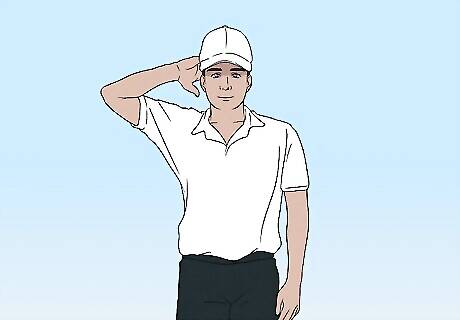
Equipment violation/disconcerting act The referee puts one arm on the back of their head. What it means: A player’s equipment is illegal, they adjusted their uniform to make it illegal, or a player took their helmet off on purpose. For a disconcerting act, the defense tried to mimic the snap count to trick the center into snapping the ball, which is illegal. Penalty consequence: 5 or 15 yards, depending on the severity of the penalty.
Personal foul The referee holds an arm out with a fist. Then, they “strike down” at their arm with their free hand in a karate-chopping motion. The referee then lists the type of personal foul, followed by the number of the offending player. What it means: A player has committed a serious personal infraction. There are a bunch of different types of personal fouls. Penalty consequence: It depends on the specific infraction, but it’s almost always a 15-yard penalty.
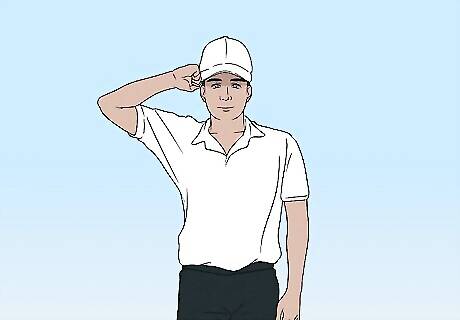
Targeting and helmet-to-helmet There is no signal for targeting. What it means: This is a type of personal foul. It occurs when a player leads with their helmet and hits an opponent who is defenseless in the neck or head area. If they make contact with the helmet with their helmet, it’s a “helmet-to-helmet” personal foul. If they don’t, it’s Penalty consequence: 15 yards. In the NFL, it may lead to fines or an ejection.
Roughing the passer The personal foul signal followed by a throwing motion. What it means: This is a type of personal foul. It occurs when a player tackles the quarterback well after they’ve thrown the ball. It can also be called for certain types of especially dangerous tackles. Penalty consequence: 15 yards. In the NFL, it may lead to fines or an ejection.
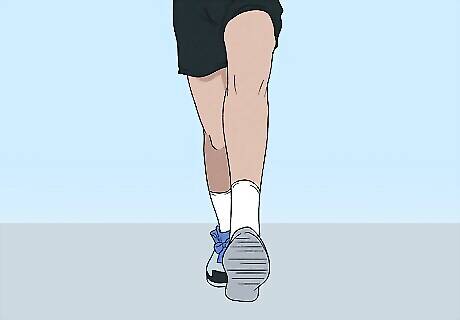
Roughing the kicker The personal foul signal followed by a kicking motion. What it means: This is a type of personal foul. It occurs when a player tackles or hits the kicker well after the ball has left the ground. Penalty consequence: 15 yards. In the NFL, it may lead to fines or an ejection.
Unsportsmanlike conduct The personal foul signal followed by raising both hands up to your side. What it means: This is a type of personal foul. It’s a catchall penalty that can refer to any kind of “excessively unkind” behavior that occurs outside of play. If players get into a fight after the whistle blows, they say something over the line to a ref, or they behave in some other outlandish kind of way, it’s unsportsmanlike conduct. Penalty consequence: 15 yards. In the NFL, it may lead to fines or an ejection.
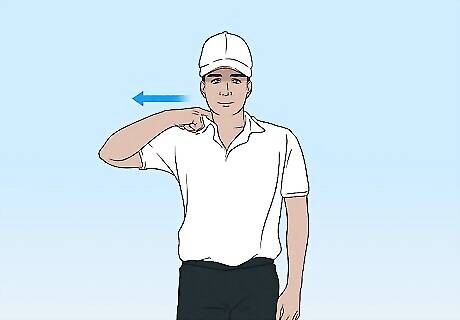
Horse collar The personal foul signal followed by a quick tugging motion on the referee’s collar. What it means: This is a type of personal foul. A horse collar tackle is when you grab a player by the rim of their shoulder pads, where their neck is located, and pull them to the ground using that leverage. It’s a serious penalty because these kinds of tackles are very dangerous for players. Penalty consequence: 15 yards. In the NFL, it may lead to fines or an ejection.
Facemask The personal foul signal followed by a hand gripping motion in front of the ref’s face. What it means: This is a type of personal foul. It means a player grabbed another player’s facemask. Whether intentional or not, this is a big penalty because of the dangers involved. Penalty consequence: 15 yards.
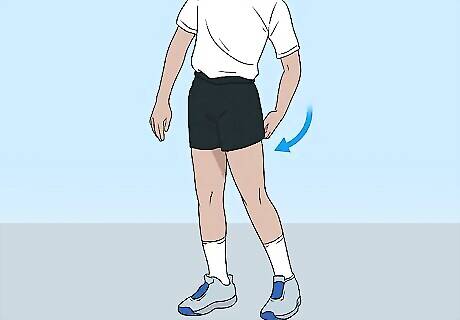
Clipping The personal foul signal followed by a slight bending at the knees. Then, the referee “jabs” at the back of their thigh. What it means: This is the last personal foul we’ll cover. Clipping is when a player blocks an opponent from behind, and below the waist. It’s a dangerous type of block to make, which is why it’s illegal. Penalty consequence: 15 yards.
Illegal forward pass The ref sticks one arm behind their back and waves it back and forth. What it means: This is a relatively rare call, but it’s usually reserved for when a QB accidentally passes the line of scrimmage but throws the ball forward anyway. This can also occur if you make a forward handoff to an ineligible receiver or if you throw the ball in an illegal way (like backwards, to preserve time). Penalty consequence: 5 yards and a loss of down.
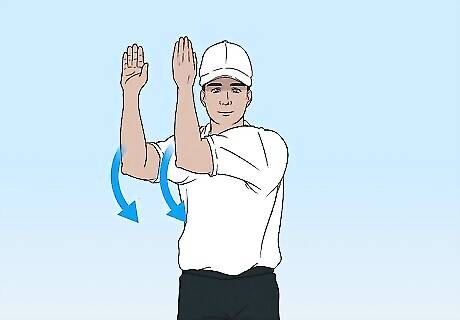
Intentional grounding The ref raises both arms with their palms separated by 6 inches or so, then they move both hands down to one of their hips. It kind of looks a bit like they’re trying to throw something on the ground. What it means: Intentional grounding occurs when a player throws the ball in the middle of nowhere while still sitting in the pocket. To just keep things simple, it’s a penalty for the QB not trying to pass to an actual person. Penalty consequence: 10 yards and a loss of down.
Tripping The referee puts one foot behind another and then points at the opposing team. What it means: A player tripped another player—either intentionally or accidentally. Penalty consequence: 15 yards.










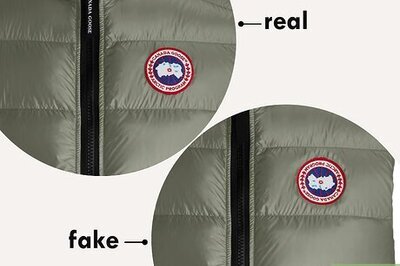


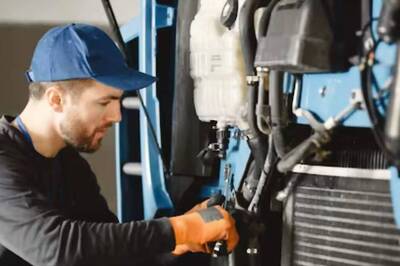
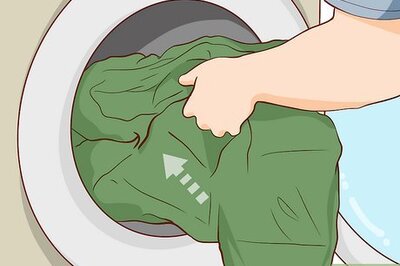
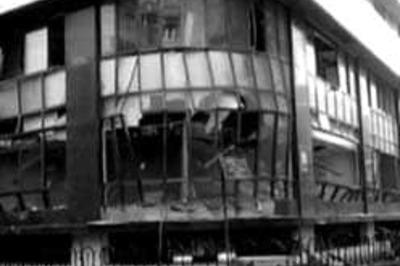
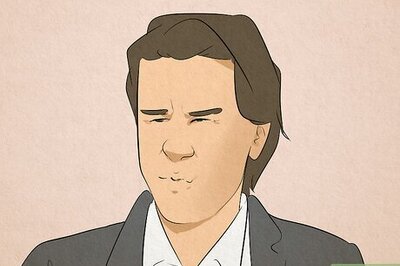
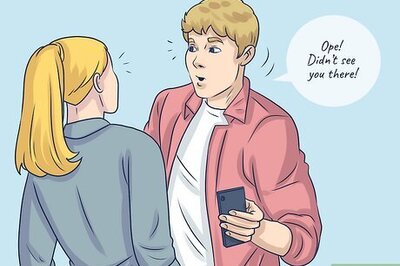
Comments
0 comment